The shock collar, remote training collar, or electronic dog collar is most commonly used in four areas –
- Keep dogs inside our property. Our dog is corrected every time he nears the fence-line. This is also known as an invisible fence or underground fence.
- Stop dogs from barking. The collar automatically delivers a correction whenever our dog starts to bark. If he continues to bark, the force, duration, and frequency of the shocks may be automatically increased.
- Train dogs and stop problem dog behaviors. Shock collars are most commonly used for off-leash training. However, some dog trainers and pet owners also use it for behavioral issues such as food aggression, and dog aggression.
- Teach dogs to stay away from dangerous animals and objects. A common use is in rattlesnake aversion training. A dog is shocked hard, but a very small number of times, when he nears a caged rattlesnake. This teaches him not to approach rattlesnakes in the future.

The use of shock collars on dogs is a very emotional topic. Discussions will often degrade into personal attacks, accusations of dog cruelty, and other types of name calling.
In this article, I will try to stick to the facts, and consider whether it is something I would use on my dogs. Note however, that facts are not always convenient, and facts are not always balanced between the two sides.
If you have already made up your mind about using electronic collars and are looking for validation, this article is not for you.
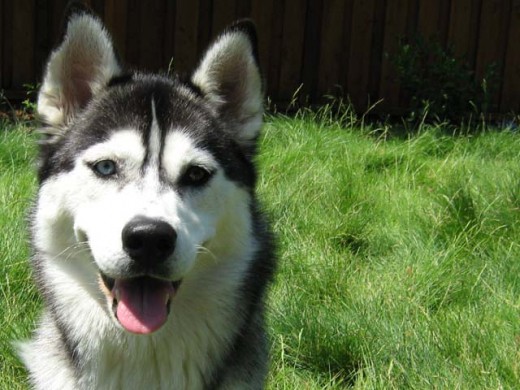
Electronic Collars vs. Shock Collars
Not all electronic collars are used as shock collars. There are three main modes – 1. Beep mode, 2. Vibrate mode, and 3. Shock mode.
All electronic collars have the shock functionality, but the beep or vibrate functions are optional.
1. Beep mode
In this mode, a beep is emitted whenever the collar controller is pressed. This beep can be used as a marker, in the same way that clickers are used in clicker training.
For the beep to be an effective marker, a dog needs prior training for associating the sound with a positive or negative consequence. For example, if the beep always precedes a sought after reward, then our dog may stop and wait, because he knows that something good is coming. Similarly, a dog may freeze or submit when he hears a beep, because he knows that failure to comply, will be followed by a painful shock.
The beep can also cause a startle response, similarly to blowing a whistle. This can be used to get our dog’s attention or to interrupt his current action. However, for this to work, we must only use the interrupt signal on very rare occasions. If applied too frequently, our dog will become accustomed to it, and just ignore it.
2. Vibrate mode
In this mode, the collar vibrates, similar to how our pager or phone vibrates to get our attention. Like the beep mode, this vibration can be used as a marker or as an interrupt.
Both the beep and vibrate modes do not deliver an electric shock to the dog.
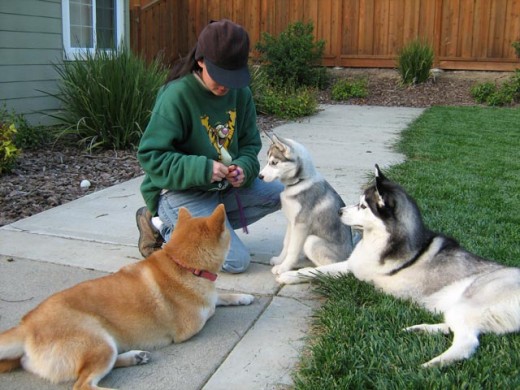


3. Shock mode.
In shock mode, the electronic collar will deliver an electric current to the dog through two contact points at the dog’s neck.
This electric current will cause pain and physical discomfort to the dog, otherwise it would not be effective in conditioning him.
The amount of pain delivered to the dog will depend on three key factors –
- The power/voltage of the electric current,
- The duration of the current, and
- The frequency of the current.
The amount of pain that the dog actually feels, will also depend on the physical characteristics of the dog (e.g. size, skin, and fur), as well as the temperament of the dog. Some dogs are more sensitive to pain than others.
Sometimes, words like stimulation are used to describe shock collars. I even saw them described as gentle training collars.
Beware of these sales gimmicks. Accept an electronic collar for what it is. If you choose to use it, make an informed decision that is based on the actual pros and cons of the system, which I will discuss below. Note that the subsequent discussion is solely based on the shock functionality of remote training collars (not on the beep and vibrate modes).

The Good
1. Allows us to control the amount of pain delivered to our dog, and administer that pain from a distance.
One of the great challenges of implementing pain based aversive techniques such as leash jerks, muzzle slaps, and finger pokes, is in controlling the amount of force delivered to the dog.
- Too much force and our dog may break down, and become extremely stressed or fearful.
- Too little force and our dog will get habituated to the corrections, and just ignore them.
Master aversive trainers are able to deliver just the right amount of force, so that the dog will not repeat a bad behavior, but at the same time, he will also not become unbalanced and fearful.
Unlike other aversive methods, remote training collars allows us to easily adjust the amount of pain delivered to a dog, and to keep that level of pain consistent in subsequent corrections. We can also administer the pain from a distance.
However, it should also be mentioned that the amount of pain actually ‘felt’ by the dog as well as the resulting response, depends on many different factors, not just the level of shock applied.
Although these devices are presented as a highly controllable method of modifying behaviour, via the controlled administering of pain/discomfort (the collars are designed to allow operator to set the duration and intensity of shock), an individual animal’s experience when a shock is applied will be influenced by numerous factors. In addition to individual temperament, the experience will be affected by the dog’s previous experiences, frequency of application, location of shock, thickness of hair and level of moisture on skin (Lindsay, 2005). Given that many of these factors are not easily determinable by the operator, this makes the device far less precise than suggested.
~~[RSPCA]
2. Can automatically deliver a shock correction to the dog, even when we are not there.
Another challenge of implementing proper aversive corrections, is using the right timing. We want to correct our dog as soon as he performs an unacceptable behavior, and stop correcting him as soon as he stops that behavior.
Electronic collars can be tied to a particular trigger event, such as barking or proximity to our fence-line. In this way, a shock is automatically and consistently delivered to the dog, as soon as he starts to bark or tries to escape. In fact, the invisible fence or shock anti-bark systems are convenient, because we do not even have to be there to deliver the corrections.
Shock collars such as these may sound tempting and easy to use, but unfortunately, consistent and automatic timing does not necessarily mean correct timing.
Studies show that automatic collars are risky, because tying a shock correction to a single trigger event, such as barking or proximity, is too simplistic and will frequently result in bad timing. This can subsequently lead to aggression and other dog behavioral issues.
There are some anti-bark collars that use sound aversion to stop dog barking, for example the Ultrasonic Anti-bark Collar. However, customer reviews have been poor because the sound stimulus is often insufficient to prevent the barking behavior.
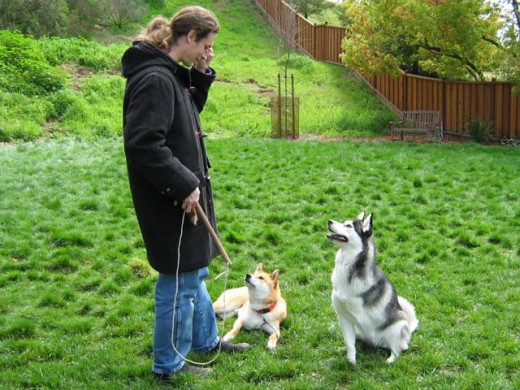
3. The source of the aversive stimulus is less clear.


When we use other pain-based aversive techniques, it is usually obvious that the pain comes from us. This may teach our dogs to associate people with physical distress, which can also lead to fear. If this happens, we may lose some of our dog’s trust, and jeopardize our bond with him.
For example, when we apply a leash correction, it is apparent that the pain originates from the leash, and sometimes (if not redirected), from us. Therefore, the dog may decide to fight with the leash, or worse, with us.
This is less of a problem with electronic collars because the source of the pain is obscured, and there is no leash to fight with. However, because the pain comes from seemingly nowhere, our dog may mistakenly associate it with something he sees in the environment (e.g. another dog), the environment itself, or to multiple unrelated objects and events. This may cause misplaced stress, fear, and aggression, toward those objects.
Automatic shock collars also have a high risk of over-correcting a dog.

The Bad
1. May increase aggression in dogs.
According to Polsky’s study, dogs kept in shock containment systems (i.e. invisible fence or underground fence), can show extreme aggression towards humans, over and beyond their normal behavior.
Polsky’s results show that a big danger with electronic collars, especially automatic e-collars, is that they may cause dogs to make the wrong associations, and learn the wrong things.
Dogs may associate the pain from the shock with the environment or with objects in the environment (including humans , dogs, or cats), rather than with their escaping or barking behaviors. This may lead to anxiety or negative associations with those objects, which can ultimately result in aggression.
Some dogs that have been conditioned in this manner, may not want to set foot in the yard, for worry of pain. They may also start to attack humans and other animals, that wander too close to the fence perimeter.
Some dogs may get habituated to the shocks, and learn that if they can tolerate the pain close to the fence-line, they can escape. Once they escape, they are rewarded with no more shocks. In this way, the dog learns that escaping is a good thing, whereas staying in the backyard is not.

2. May increase stress in dogs and reduce their quality of life.

Schalke et al. conducted an electronic collar training study on fourteen laboratory-bred Beagles. Shock collar training was conducted over 7 days, for 1.5 hours per day. Then the dogs were released to freely hunt for 5 days, and to hunt on leash for another 5 days. Schalke’s study showed that the dogs who
… were able to clearly associate the electric stimulus with their action, i.e. touching the prey, and consequently were able to predict and control the stressor, did not show considerable or persistent stress indicators.
~~[ Excerpt from ScienceDirect.com ]
However, the two other groups of dogs that were not able to so clearly predict and control the delivery of the shocks, showed elevated stress levels, with the highest levels present in the dogs that were arbitrarily shocked.
Most importantly, the group of dogs that received a shock for not abiding by a recall (Here) command, were also significantly elevated.
Even more distressing, is that the results remained the same when the dogs were reintroduced to the testing area after four weeks. Their stress levels remained high, even though they did not receive any shocks during this reintroduction period.
The results from Schalke’s study indicate that electronic collars are extremely risky to use even for the short term. Stress levels of the dogs were high after just 7 days, and were elevated as soon as they returned to the shock treatment environment. This is consistent with Polsky’s study, which show that dogs may associate the shock and stress they receive, with the environment itself.
This study provides strong evidence that shock collars are inappropriate for most kinds of dog training, as even common recall training will result in elevated stress levels, and a lower quality of life.
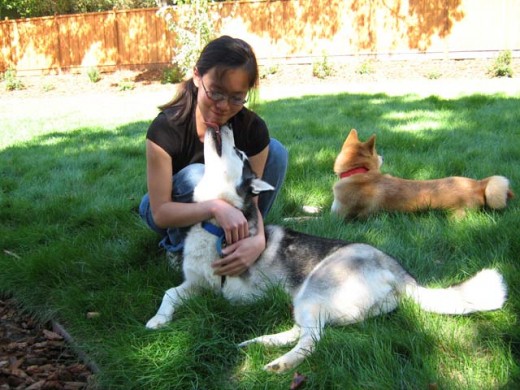
3. May weaken our bond with our dog.
Polsky and Schalke’s studies show that dogs often associate the pain from electronic collars with their environment, as well as with people, animals, and other objects in that environment. Even after shocks are no longer administered, the dogs still attach the environment to something stressful and negative.
Therefore, using a remote training collar on our dog may cause him to associate our home or backyard, with stress and pain. Or worse yet, it may cause him to associate the stress with other dogs, other people, or with us.
Remember that Schalke’s results show this negative attachment forming in a matter of 7 days.

Alternative to Shock Corrections
When I first got my Shiba Inu, I had a lot of problems with him. At the time, I was under the false impression that reward methods would not work on my dominant, stubborn, and aggressive Shiba Inu. Therefore, I was using aversive training and briefly considered the use of electronic collars, because the other aversive-based methods were not working well.
However, after doing a lot of reading, I decided to give reward dog training a chance.
Reward training is not a miracle cure, and it will still take a lot of work, consistency, and patience, to train our dog. However, reward techniques can work on dominant, stubborn, and aggressive dogs. It has worked well for training my Shiba. In fact, he stopped showing aggression toward me and others, after I stopped using pain-based methods.
Common Justifications for Shock Collars
1. Save a dog’s life.
Proponents of electronic collars sometimes argue that they are used to save a dog’s life, by preventing him from running into traffic.
It is important to note that off-leash recall is never 100% reliable, whatever equipment or training methods we may choose to use.
This is why there are leash laws in most neighborhoods. This is also why off-leash parks require dogs to be on-leash when they are in the parking lot area, or in areas that are close to roads and traffic.
I use a no-slip collar and secure leash to walk my dogs in the neighborhood. I also regularly check the collar and leash to ensure that they in good working order. Off-leash exercise can be had in fully enclosed spaces or large parks, where we are far enough away from traffic that a failed recall, will not result in an accident. Do not play Russian Roulette with our dog’s life.
2. Do not cause much pain, just a tingle.
Some people try remote training collars on themselves, and report that it only causes a tingle, so it really does not apply much pain to our dog.
However, to closely experience shock collar conditioning from my dog’s perspective, I would have to put the collar on my neck and surrender the controller to a handler. I will not know why, when, or where the shocks will be administered.
As I carry on with my day, I may feel the need for a smoke. I reach for it, and feel a tingle on my neck. It is just a tingle, so I continue.
At this point, the tingle not only persists, but increases in intensity. I am strong willed though, so I keep going. After all, that is exactly why I needed the shock collar in the first place.
The intensity keeps increasing until finally, I drop the bad object. My hand shakes. The experience was unpleasant, and now I want relief more than ever. Unfortunately, I do not even have a patch, all I have is this locked-on collar that I cannot remove. My eyes stray and my hands start to reach again …
Electronic collars are NOT harmless, nor are they just a little tingly. If they were so, they would not work. Their use is illegal for children and non-consenting adults. Here is another case in Utah. Trying the collar on ourselves, and doing a single, short, expected shock, at low intensity, is *not* how the collar will be used on our dogs. It is merely a gimmick to convince us that the collars are innocuous. If they were truly so harmless –
- Why is their use banned for children and non-consenting adults.
- Why is there so much scientific data showing how risky they can be.
- Why are they on the “do not use” list of so many well-respected dog advocate organizations.
- Why would they “work” on our stubborn dog, when other pain based aversive collars such as prong collars or choke collars have stopped working.
Logic tells us that this is a false claim.
3. Everybody else is biased and dishonest.
Another common argument, is that those who point out the risks of remote training collars are biased and dishonest. Personal attacks or ad hominem arguments such as these are not only pointless, but they also discourage rational discourse and the exchange of ideas. More on bias.
In this article, I describe what attracted me to look into electronic collars as a possible training tool for my Shiba Inu, as well as some of the risks that were of concern. Based on the studies and articles that I found, I also include counter-arguments (if present) for each of those points. In general, I found very little scientific evidence to recommend its use, while at the same time, there are many studies that show the risks involved.
After reading the results of Polsky and Schalke, it is difficult for me to come up with cases where the shock collar would be appropriate in dog training. Perhaps the only case would be in animal aversion training, such as teaching our dogs to fear and stay-away from rattlesnakes.
If you know of supporting scientific studies or substantiated data which highlight the good of remote training collars, it would certainly contribute much to the discussion, so please share them with us.
However, based on current reliable data, shock collars are not something I would use on my own dogs or generally recommend to others. It is also worth noting that the ASPCA, AVSAB, RSPCA, Kennel Club, and Blue Cross, are all against the use of shock collars for companion dogs.
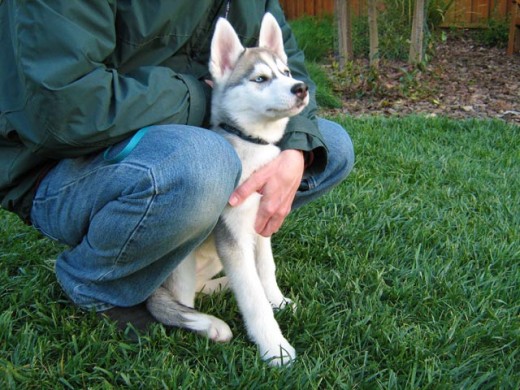
After neutering my Sheba Inu became aggressive.
He had a very adverse reaction to the cone collar.
I will continue with reward based training until he has reached 1 Year old.
If his behavior has not changed by then I will circle back around to the possible use of a shock collar.
We have used shock/tone collars with great effect to keep our dogs home. If you hit the tone before you hit the shock it takes very few repetitions before the dog associates the tone with a shock if its action doesn’t change. Eventually just having the collar on is enough to keep our girls from chasing deer and or coyotes for long distances. I understand the emotionalism this sort of device generates and nothing is appropriate in all situations. The devices are easy to abuse and I suspect that is where they much of the bad reputation they have among certain groups. All I can say is we have used them on 5 dogs over the past 20 years on our farm. We have packs of coyotes that will do everything they can to lure our livestock guardian dogs to come to them. and kill them. When the dog takes off and doesn’t respond to our recall all we have to do is press the tone button and the dog stops, turns around, returns, and of course is given a reward for coming home. We are asking them to go against instinctive behaviors and the fact that a tone and a follow up short shock, if necessary, is enough to stop them from doing what feels completely natural but could get them maimed or killed is a great relief to us.
Thank you for a very well presented discussion on Shock Collars. You have covered the ground well. Dog owners must be responsible and evaluate methods and techniques for their own situation and dogs. What works for one person, dog or situation may not work in another. My example with a high-separation anxiety GSD is a good example. Because of the way she was treated, long before I rescued her, she had very little attention left to pay to training or adjusting to living situations. I carefully considered many options, including shock collars, but the prong collar worked best for training purposes. After her training period and prolonged adjustment to family and living situations, the prong collar was no longer needed. Now we are using hand signals only with 100% success.
Dog owners must do most of there work BEFORE they become dog owners. Just how much inconvenience are you willing to accept to own, train and live with another species? To me, the rewards are more than worth the discomfort and financial loss a dog may bring. Others may not agree. Over my 70 years I have had 7 dogs and they have served me well and made me a more complete person.